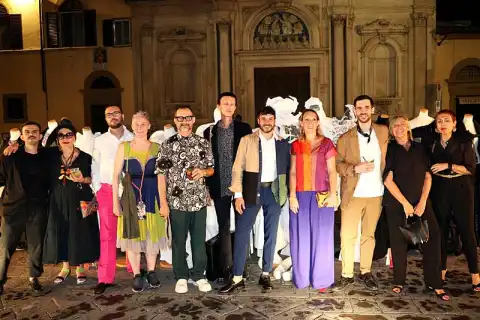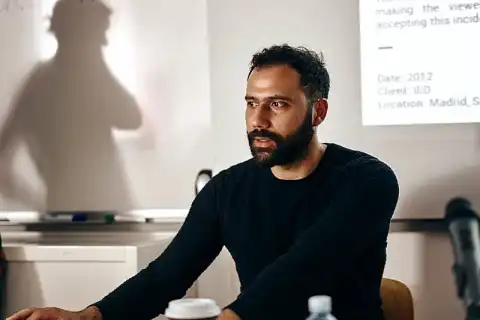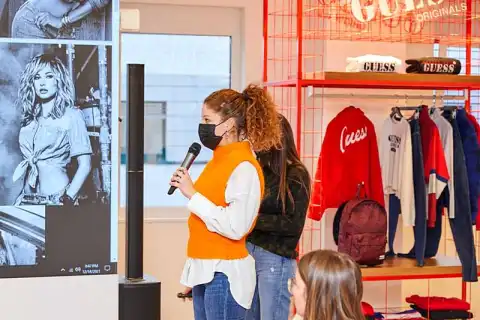Master of Arts - Interior Design
- 2 years
- Duration
- 20,400 EUR/year
- Price
- October
- Start
- May
- Deadline
- Master
- Degree
- Campus
- Format
- Milan / Italy
- Location
Program description
According to the MA in Interior Design program, space design is a team effort that may rebuild and reshape the bond between people, their environments, and the ecosystems to which they belong.
Understanding the connection between modern cities and the stories they tell is crucial when planning public gathering places, museum and exhibition spaces, cityscapes, and urban interiors. Taking an interdisciplinary perspective, this course delves into the effects of interior project design on both society and the environment. Its goal is to critically examine changes occurring on a global scale in both built and non-built environments. As part of this program, researchers are working to create sustainable building systems and spatial gadgets. Eventually, these tools could be used for positive eco-social renewal. Workshops with experts in topics as varied as astronomy, ethology, and partying will help to broaden the project's scope and provide researchers a chance to try out new approaches and produce fresh results.
Program structure
1st year
- Design methods (practice of interiors, scenoghraphy and exhibition)
- Design 1 (interiors for communities)
- Design and culture (ephemeral interiors)
- Design 2 (events & rituals)
- Design methods for visual communication
- Rendering 3d (miscellaneous drawings)
- Anthropology of complex societies
2nd year
- Phenomenology of the mass media
- Ecodesign (metabolic interiors)
- Space representation techniques
- Interior architecture (urban interiors)
- Landscape design (interior landscape)
- Materials typology
- Elective subject
- English (found in translation)
- Final project
Price
Fee for 1 year education is 20400.00 EUR for international students
Requirements for applicants
Admission requirements
For the Master of Arts (DASL) in Interior Design. Spatial practices for gathering cultures direct admission is foreseen for candidates coming from study courses in the following areas: Architecture and Interior Design. Candidates from other disciplines may be admitted following assessment of their preparation, according to the technical requirements specified below.
Software knowledge and technical skills requirements:
- CAD Design and 3D Modeling: Skills in Autodesk CAD software (e.g. AutoCAD or Autodesk Revit). Experience in 3D modeling, using software such as Rhinoceros, 3ds Max, or similar.
- 3D Rendering and Visualization: Skills in 3D rendering, including knowledge of specific rendering software such as V-ray, Corona Renderer, or similar. Ability to create realistic and detailed visualizations from 3D models.
- Graphics and Layout Design: Advanced skills in the Adobe suite, with particular emphasis on: Adobe Photoshop: Manipulating and editing images. Adobe Illustrator: Creating and editing vector graphics. Adobe InDesign: Design layouts for print and digital publications. Ability to use additional Adobe suite software will be considered an advantage.
- Productivity and Presentation: Knowledge of Microsoft Office suite applications, such as Word for documentation, Excel for data analysis, and PowerPoint for creating effective presentations.
About the university

Since 1966, we have been the largest Higher Education Network in the creative area to keep both a worldwide perspective and a strongly Italian cultural matrix.
Our educational strategy has evolved over time, but at its core remains the same: we mix theoretical study with hands-on experience and the expertise of working experts. One of the things we emphasize in our classes is always thinking ahead, in the here and now. We are a diverse, multidisciplinary institution that views design as a tool for social transformation.
Among the many international academic networks in which we participate are Cumulus, Elia, and WDO, just to name a few.
Campuses
In the 1970s and 1980s, we expanded to Rome (1973), Cagliari (1984), and Turin (1989) in Italy.
Beginning in 1994 with the Madrid campus and continuing on to Barcelona in 2002, Spain's modern era began in the 1990s.
The Group also spread internationally, establishing a presence in Sao Paulo, Brazil, in 2005, and then in Venice, Italy, in 2007, Florence, Italy, in 2009, and Como, Italy, in 2009, with the acquisition of the Aldo Galli Academy of Fine Arts. The Group expanded its footprint in Brazil in 2014 by renovating the Cassino da Urca and opening a campus in Rio de Janeiro; in 2020, the Group will expand its presence in Spain by purchasing the Centro Superior de Diseo Kunsthal in Bilbao.
Read more about IED Istituto Europeo di Design, Italy, Spain, Brazil





